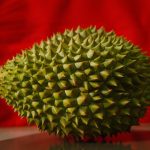Are you struggling to remove that stubborn Asian cooking sauce stain from your favorite linen fabric? Look no further!
This article will guide you through the step-by-step process of effectively eliminating the stain.
From understanding the nature of the stain to selecting the right cleaning method, we’ve got you covered.
Say goodbye to those pesky stains and hello to fresh, clean linen!
Table of Contents
Understanding the Stain
Now, let’s take a closer look at the stain and understand its composition. Asian cooking sauce stains can be quite stubborn and difficult to remove from linen fabric. These stains often contain a combination of ingredients like soy sauce, chili oil, garlic, and various spices, which can leave behind a dark, greasy spot on the fabric.
To effectively remove these stains, it’s important to act quickly. Start by gently blotting the stain with a clean cloth to remove any excess sauce. Avoid rubbing the stain, as it can spread and further embed into the fabric.
Next, pretreat the stain by applying a small amount of liquid laundry detergent directly onto the affected area. Allow it to sit for a few minutes to penetrate the stain. Then, using a soft brush or your fingers, gently scrub the area in a circular motion to help loosen the stain.
After pretreating, wash the fabric in the hottest water suitable for the fabric type. Check the care label for specific washing instructions. Adding a laundry booster like oxygen bleach or enzyme-based stain remover to the wash can also help break down the stain.
Once the wash cycle is complete, check the fabric for any remaining stain. If necessary, repeat the pretreatment and washing process until the stain is completely gone. Finally, air dry the fabric to prevent any heat from setting the stain.
Pre-treating the Stain
First, you should gently blot the stained area of your fabric with a clean cloth to remove any excess sauce. This will help prevent the stain from spreading further into the fabric.
Once you have done this, it’s time to move on to pre-treating the stain. Here are three effective stain removal techniques that can be used for common fabric stains like Asian cooking sauce:
-
Dishwashing liquid: Mix a small amount of dishwashing liquid with warm water. Apply the mixture to the stained area and gently rub it in with a clean cloth. Let it sit for a few minutes, then rinse with cold water.
-
Vinegar and water: Mix equal parts white vinegar and water. Dab the mixture onto the stain and let it sit for about 15 minutes. Rinse with cold water.
-
Baking soda paste: Make a paste by mixing baking soda with water. Apply the paste to the stain and let it sit for 30 minutes. Rinse with cold water.
Remember to always test any stain removal technique on a small, inconspicuous area of the fabric before applying it to the stain. This will help ensure that the fabric doesn’t get damaged.
Selecting the Right Cleaning Method
When it comes to selecting the right cleaning method for your stain, you have a few options to consider.
First, you can try using water or detergent to remove the stain. This can be an effective method for many types of stains, as water helps to dilute and wash away the stain, while detergent can help break down and lift the stain from the fabric.
However, if the stain proves to be stubborn and difficult to remove, you may want to explore other options such as stain remover products or even professional cleaning services. These options can provide more specialized and powerful solutions to tackle tough stains, ensuring that your fabric is restored to its original condition.
Water or Detergent?
You can use water or detergent to remove the Asian cooking sauce from linen fabric. Here are three reasons why water is a great choice for this task:
- Water is easily accessible and affordable, making it a convenient option for cleaning stains at home.
- Water is a natural and gentle cleaning agent, which means it is less likely to damage delicate linen fabric.
- Water is effective at removing water-based stains, such as Asian cooking sauce, without the need for harsh chemicals.
While vinegar is also a popular choice for stain removal, it may not be the best option for removing Asian cooking sauce from linen fabric. Vinegar can have a strong smell, and its acidic nature may cause discoloration or damage to the fabric.
Therefore, water or detergent is generally recommended for this specific task. Remember to always test a small, inconspicuous area of the fabric before applying any cleaning solution to ensure compatibility and prevent any potential damage.
Stain Remover Options
Water and detergent are both popular stain remover options for various types of fabric. When it comes to household remedies and natural cleaning methods, these two options are often the go-to choices. Water is a versatile and gentle option that can be used on most fabrics without causing damage. Detergent, on the other hand, is specifically formulated to remove stains and can be more effective in tackling tough stains.
To help you understand the differences between water and detergent as stain removers, here is a comparison table:
| Water | Detergent | |
|---|---|---|
| Effectiveness | Mild | Strong |
| Versatility | Wide range of fabrics | Wide range of fabrics |
| Ease of use | Simple, just soak or rinse | Requires mixing and application |
| Eco-friendliness | Environmentally friendly | May contain chemicals |
When deciding between water and detergent, consider the fabric type and the severity of the stain. For delicate fabrics or mild stains, water may be sufficient. For tougher stains or more durable fabrics, using detergent can provide a stronger cleaning power.
Professional Cleaning Services
For a thorough and efficient cleaning of your garments, hiring professional cleaning services can be a great option. These experts have the knowledge and experience to tackle even the most stubborn stains. They use specialized cleaning solutions and equipment to ensure the best results without causing any damage to your garments.
When it comes to tough stains like Asian cooking sauce on linen fabric, professional cleaning techniques can be highly effective. Unlike DIY stain removal methods, professional cleaning services can provide a deeper and more thorough clean, ensuring that the stain is completely eliminated. Additionally, they can also help prevent any potential damage to the fabric that may occur with improper stain removal techniques.
Using Household Ingredients for Stain Removal
Baking soda and vinegar can be effective in removing stains from linen fabric. These homemade stain removers are natural and safe for your fabric. Here are three simple and effective methods to remove stains using these household ingredients:
-
Baking Soda Paste: Mix baking soda with water to create a thick paste. Apply the paste directly to the stain and gently rub it in with a cloth or sponge. Let it sit for about 30 minutes, then rinse with cold water. This method works well for fresh stains and is especially effective for removing food stains like Asian cooking sauce.
-
Vinegar Soak: Fill a basin or sink with warm water and add half a cup of white vinegar. Submerge the stained linen fabric in the vinegar solution and let it soak for at least 30 minutes. After soaking, rinse the fabric with cold water and wash it as usual. Vinegar is a great natural stain remover and can help break down and lift stubborn stains.
-
Baking Soda and Vinegar Combination: For tougher stains, you can combine baking soda and vinegar to create a powerful stain-fighting solution. Sprinkle baking soda over the stain, then pour a small amount of vinegar on top. The mixture will start to fizz, which helps to loosen the stain. Scrub the fabric gently, then rinse with cold water.
Applying Commercial Stain Removers
To effectively treat stubborn stains, you can try applying a commercial stain remover that is specifically designed for tough stains. Commercial stain removers are formulated with powerful ingredients that can break down and lift even the most stubborn stains from various fabrics and surfaces. These products are widely available in supermarkets, hardware stores, and online.
When choosing a commercial stain remover, look for one that is suitable for the type of fabric you are treating. Some stain removers are designed specifically for certain fabrics, such as cotton or silk, while others are more versatile and can be used on a variety of materials. Read the product labels carefully to ensure compatibility with your fabric.
To use a commercial stain remover, follow the instructions provided by the manufacturer. Typically, you will need to apply a small amount of the product directly onto the stain and let it sit for a few minutes to penetrate the fabric. Then, gently blot or rub the stain with a clean cloth or sponge. Rinse the area thoroughly with water to remove any residue.
While commercial stain removers can be highly effective, it’s important to note that they may not work on all types of stains. In some cases, you may need to combine their use with other household stain removal techniques or seek professional assistance for particularly stubborn stains.
Washing and Drying the Fabric
After applying the commercial stain remover, you can now wash and dry the fabric. Proper washing techniques and fabric care are essential to ensure that the stain is completely removed and the fabric remains in good condition. Here are some tips to help you wash and dry your fabric effectively:
| Washing Techniques | Fabric Care |
|---|---|
| Use a gentle cycle and cold water to prevent further damage to the fabric. | Read the fabric care label to determine the appropriate washing instructions. |
| Add a mild detergent to the washing machine. Avoid using bleach or harsh chemicals that can weaken the fabric. | Avoid wringing or twisting the fabric, as this can cause stretching or distortion. |
| If the stain is still visible after washing, repeat the stain remover application before drying. | Dry the fabric on a low heat setting or air dry to prevent shrinkage or damage. |
| Iron the fabric on a low heat setting if necessary, following the fabric care instructions. | Store the fabric in a cool, dry place to prevent mildew or discoloration. |
Additional Tips for Effective Stain Removal
Before attempting to remove a stain, it’s important to conduct a spot test on a small, inconspicuous area of the fabric to ensure that the cleaning method won’t cause any damage.
Acting quickly is crucial in stain removal as fresh stains are generally easier to treat.
Spot Test Before
Make sure you spot test the Asian cooking sauce on a small, inconspicuous area of the linen fabric before trying to remove it. This is crucial to prevent any potential damage or discoloration to the fabric.
Here are some additional tips for effective stain removal and preventing future stains:
- Use a mild detergent or stain remover specifically designed for fabrics.
- Gently blot the stain with a clean cloth or paper towel to remove any excess sauce.
- Avoid rubbing or scrubbing the stain, as it may push the sauce deeper into the fabric.
- Work from the outside of the stain towards the center to prevent spreading.
- Rinse the fabric with cold water after removing the stain to ensure all traces of the sauce are gone.
Act Quickly for Success
To ensure success in stain removal, it’s important to act quickly by using mild detergent or stain remover specifically designed for fabrics.
When dealing with Asian cooking sauce stains on linen fabric, time is of the essence. The longer the stain sits, the more difficult it becomes to remove.
Start by blotting the stain gently with a clean cloth or paper towel to remove any excess sauce. Avoid rubbing, as this can push the stain deeper into the fabric.
Then, apply a small amount of mild detergent or stain remover to the stained area and gently work it into the fabric using a soft brush or your fingertips.
Allow the detergent or stain remover to sit for a few minutes before rinsing the fabric thoroughly with cold water.
Use Appropriate Cleaning Method
Acting quickly and choosing the appropriate cleaning method is crucial for effectively getting rid of tough stains on different types of fabric. When it comes to removing Asian cooking sauce from linen fabric, here are some important tips to keep in mind:
- Blot the stain with a clean cloth or paper towel to remove any excess sauce.
- Mix a solution of mild dish soap and warm water. This will help break down the stain without damaging the fabric.
- Gently apply the solution to the stained area using a clean sponge or cloth.
- Avoid rubbing or scrubbing the stain, as this can push it deeper into the fabric and make it harder to remove.
- Rinse the area with cold water to remove any remaining soap residue.
- Finally, air dry the fabric or use a fan to prevent any heat from setting the stain.
Conclusion
In conclusion, removing Asian cooking sauce stains from linen fabric can be easily achieved with the right approach. By understanding the nature of the stain and pre-treating it, you can effectively eliminate the stain. Whether using household ingredients or commercial stain removers, the key is to follow the instructions and be patient.
Finally, selecting the appropriate cleaning method and washing and drying the fabric properly will ensure that the stain is completely removed. With these tips, you can restore your linen fabric to its pristine condition in no time.
- Why Is Red Velvet Not Red? - April 25, 2024
- How Do You Describe Velvet Fabric? - April 25, 2024
- How Strong Is Velvet? - April 25, 2024





